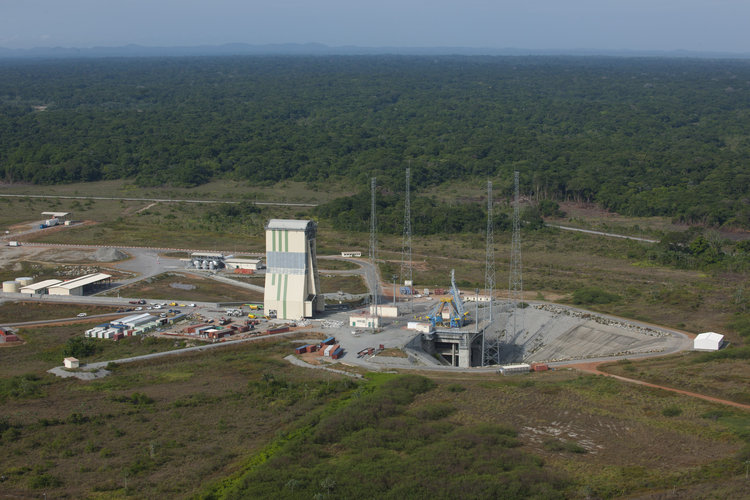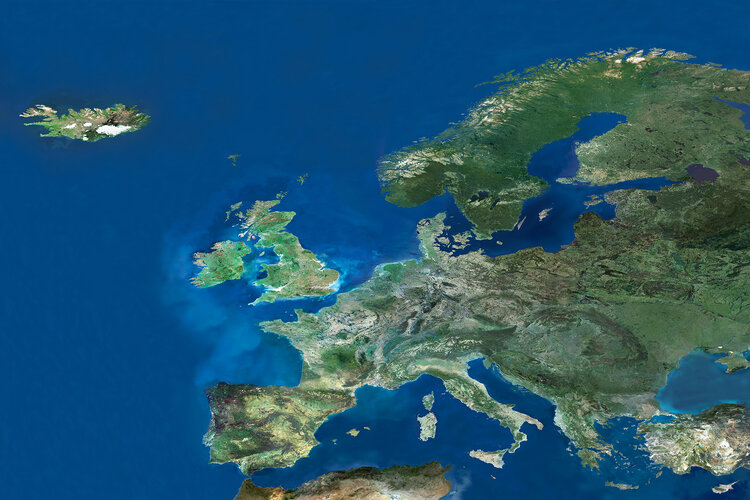
Copernical Team
NASA announces winners of Deep Space Food Challenge
 Variety, nutrition, and taste are some considerations when developing food for astronauts. For NASA's Deep Space Food Challenge, students, chefs, small businesses, and others whipped up novel food technology designs to bring new solutions to the table.
NASA has selected 18 U.S. teams to receive a total of $450,000 for ideas that could feed astronauts on future missions. Each team will rece
Variety, nutrition, and taste are some considerations when developing food for astronauts. For NASA's Deep Space Food Challenge, students, chefs, small businesses, and others whipped up novel food technology designs to bring new solutions to the table.
NASA has selected 18 U.S. teams to receive a total of $450,000 for ideas that could feed astronauts on future missions. Each team will rece NASA looks beyond SpaceX, Boeing contracts for space station commutes
 NASA posted a formal request on a government website Wednesday, seeking companies that could provide astronaut transportation vehicles to the International Space Station by 2027.
SpaceX has provided such transport services with the Crew Dragon capsule since May 2020, while Boeing also holds a contract. But Boeing is four years behind schedule in delivering on its contract, as the compan
NASA posted a formal request on a government website Wednesday, seeking companies that could provide astronaut transportation vehicles to the International Space Station by 2027.
SpaceX has provided such transport services with the Crew Dragon capsule since May 2020, while Boeing also holds a contract. But Boeing is four years behind schedule in delivering on its contract, as the compan Rocket Lab to recover Electron Rocket, introduce helicopter support operations
 Rocket Lab USA reports it will attempt a controlled ocean splashdown and recovery of the first stage of an Electron rocket during the company's next launch in November. The mission will be Rocket Lab's third ocean recovery of an Electron stage; however, it will be the first time a helicopter will be stationed in the recovery zone around 200 nautical miles offshore to track and visually observe a
Rocket Lab USA reports it will attempt a controlled ocean splashdown and recovery of the first stage of an Electron rocket during the company's next launch in November. The mission will be Rocket Lab's third ocean recovery of an Electron stage; however, it will be the first time a helicopter will be stationed in the recovery zone around 200 nautical miles offshore to track and visually observe a U.S. needs nuclear spacecraft to compete with China, NASA official says
 NASA and U.S. aerospace experts urged Congress on Wednesday to invest more quickly and heavily in development of nuclear-powered spacecraft Wednesday to stay ahead of such competitors as China.
The space agency believes spacecraft powered by a nuclear thermal rocket reach Mars in just three to four months, which is about half the time required by traditional, liquid propellant rockets.
NASA and U.S. aerospace experts urged Congress on Wednesday to invest more quickly and heavily in development of nuclear-powered spacecraft Wednesday to stay ahead of such competitors as China.
The space agency believes spacecraft powered by a nuclear thermal rocket reach Mars in just three to four months, which is about half the time required by traditional, liquid propellant rockets. South Korea launches own space rocket for the first time
 South Korea launched its first domestically developed space rocket on Thursday, carrying a 1.5-tonne payload into orbit it seeks to join the ranks of advanced space-faring nations. The Korea Space Launch Vehicle II, informally called Nuri and emblazoned with a South Korean flag, rose upwards from the launch site in Goheung trailing a column of flame.
South Korea launched its first domestically developed space rocket on Thursday, carrying a 1.5-tonne payload into orbit it seeks to join the ranks of advanced space-faring nations. The Korea Space Launch Vehicle II, informally called Nuri and emblazoned with a South Korean flag, rose upwards from the launch site in Goheung trailing a column of flame. Ten years of Soyuz at Europe’s Spaceport

On 21 October 2011, the first pair of Galileo navigation satellites was launched by a Russian-built Soyuz rocket from Europe’s Spaceport in French Guiana.
Three new Directors join the European Space Agency’s Executive Board

As of today, ESA has appointed three new Directors - for Commercialisation, Industry and Procurement, Earth Observation Programmes and Navigation. The new Directors were appointed by ESA Council at its meeting on 21 October; they will support the Director General with responsibility for activities and overall objectives in their respective directorates.
Final report from the high-level advisory group on accelerating the use of space in Europe

Final report from the high-level advisory group on accelerating the use of space in Europe
A group of advisors were given the mandate to advise the ESA DG on directions and actions for ESA to realise ambitious goals, together with other stakeholders, serving the future of Europe and its citizens. This report summarises their recommendations.
ESA Vision: accelerate the use of space

ESA Vision: accelerate the use of space
Europe must have the ambition to have a space programme and a space agency that is world-class and is leading. Agenda 2025 will bring European space to the next level. To meet our ambitions we need to accelerate the use of space in Europe.
Living Planet Symposium 2022: time for abstracts

ESA’s next Living Planet Symposium is set to take place on 23–27 May 2022 in Bonn, Germany. In gearing up for this prestigious event, it’s now time to submit abstracts to ensure a much sought-after slot to present topics such as the latest scientific findings on our planet, novel Earth observing technologies and new opportunities emerging in the rapidly changing sector of Earth observation.

